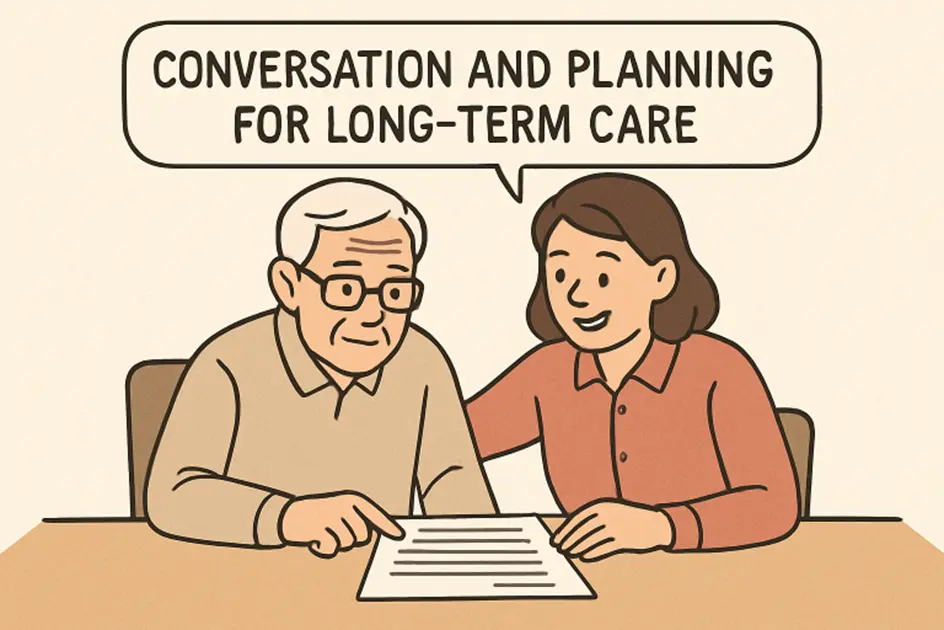Understanding the Need for Long-Term Care
As people age, the likelihood of requiring some level of long-term care increases, yet this inevitability is often overlooked until a health crisis suddenly brings the need to the forefront. Many families only begin considering their options after a significant event, such as a fall or hospital stay, has already occurred, leaving little time to research and evaluate possibilities thoroughly. These rushed decisions can create confusion, anxiety, and sometimes lasting regret if the chosen solution does not align with the older adult’s wishes.
Being proactive about learning the facts—including the types of care available, the associated costs, and the impact on family members—can make future decisions much less daunting. Families who investigate reputable resources and providers, such as 1stmeridiancareservices.com are better equipped to have meaningful conversations about preferences and needs, even before a crisis arises. When you know your options in advance, choosing the right care becomes a process guided by clarity rather than panic.
Common Misconceptions About Long-Term Care
Misconceptions about long-term care include the myth that Medicare covers all costs, which is false as it only offers short-term coverage for skilled nursing after hospitalization. Another is that only those with chronic conditions need to plan early; in reality, accidents or cognitive decline can impact anyone, making early planning essential. These misunderstandings can lead to unexpected expenses, limited choices, and emotional strain. Debunking these myths helps families explore options, access benefits, and maintain loved ones’ dignity.
Exploring Care Options
The spectrum of long-term care solutions caters to aging adults’ diverse needs and preferences, impacting quality of life and cost. Key options include:
- In-Home Care: Services provided in the individual’s residence, from personal task assistance to skilled nursing, promote independence and potentially delay institutionalization.
- Assisted Living Facilities: Residential communities offering living spaces, housekeeping, meals, and assistance with daily activities, alongside basic healthcare services and social programs.
- Nursing Homes: Facilities providing 24/7 clinical oversight by registered nurses and aides for individuals with complex medical or personal care needs requiring frequent intervention or constant supervision.
- Community-Based Services: Programs like adult day care centers offer supervised, part-time care outside the home with structured activities, meals, and health services, providing respite for caregivers and social engagement for attendees.
Evaluating these options based on medical requirements, lifestyle goals, and finances, potentially with guidance from care advisors, is crucial for selecting the most suitable arrangement.
Financial Planning for Long-Term Care
Long-term care is often more costly than families expect, sometimes costing thousands monthly for residential care or hundreds daily for in-home support. Without a plan, these expenses can drain savings, disrupt retirement, or force difficult choices about care. It’s crucial to explore financial strategies early. Funding options include long-term care insurance, health savings accounts, and government programs like Medicaid. Medicaid has strict asset and income limits, so advance planning is vital if relied upon. Working with a financial planner helps families create a care funding plan, exploring various savings and future budgets.
Involving Family in the Decision-Making Process
An ongoing family conversation transforms long-term care planning from a potential conflict into collaboration. These discussions let everyone—older adults, children, grandchildren—share viewpoints, address fears, and set clear expectations about care and finances. Collectively making decisions creates a supportive environment, reducing guilt or resentment during future changes. Agreeing on a care plan, assigning responsibilities, and regularly checking comfort levels foster trust and peace of mind. Documenting wishes in a legal directive or power of attorney helps prevent confusion or disputes if surprises happen.
Regularly Reviewing and Updating Care Plans
Needs rarely stay static as people age—health, relationships, living, and finances change. That’s why updating long-term care plans at least annually or after major events like new diagnoses, mobility changes, or family shifts is crucial. Regular reviews help families identify gaps, stay informed on new services or financial options, and refine strategies for future challenges. Staying proactive minimizes surprises and ensures smoother transitions during life changes.
Conclusion
Navigating the landscape of long-term care can be overwhelming, but it doesn’t have to be. With informed research, timely family conversations, and the right use of digital resources, aging adults and their loved ones can approach these decisions with confidence. By taking action before it’s urgent, you ensure that personal values, quality of life, and financial security remain central throughout the entire care journey.
Also Read-
